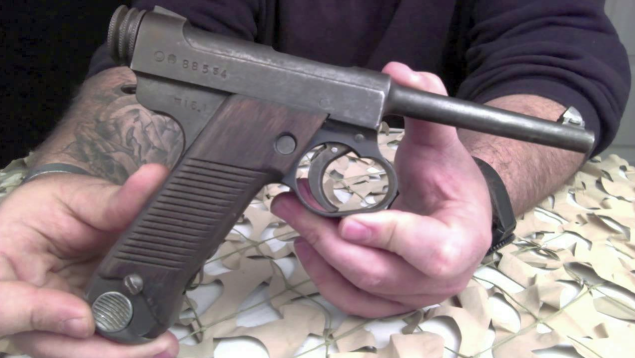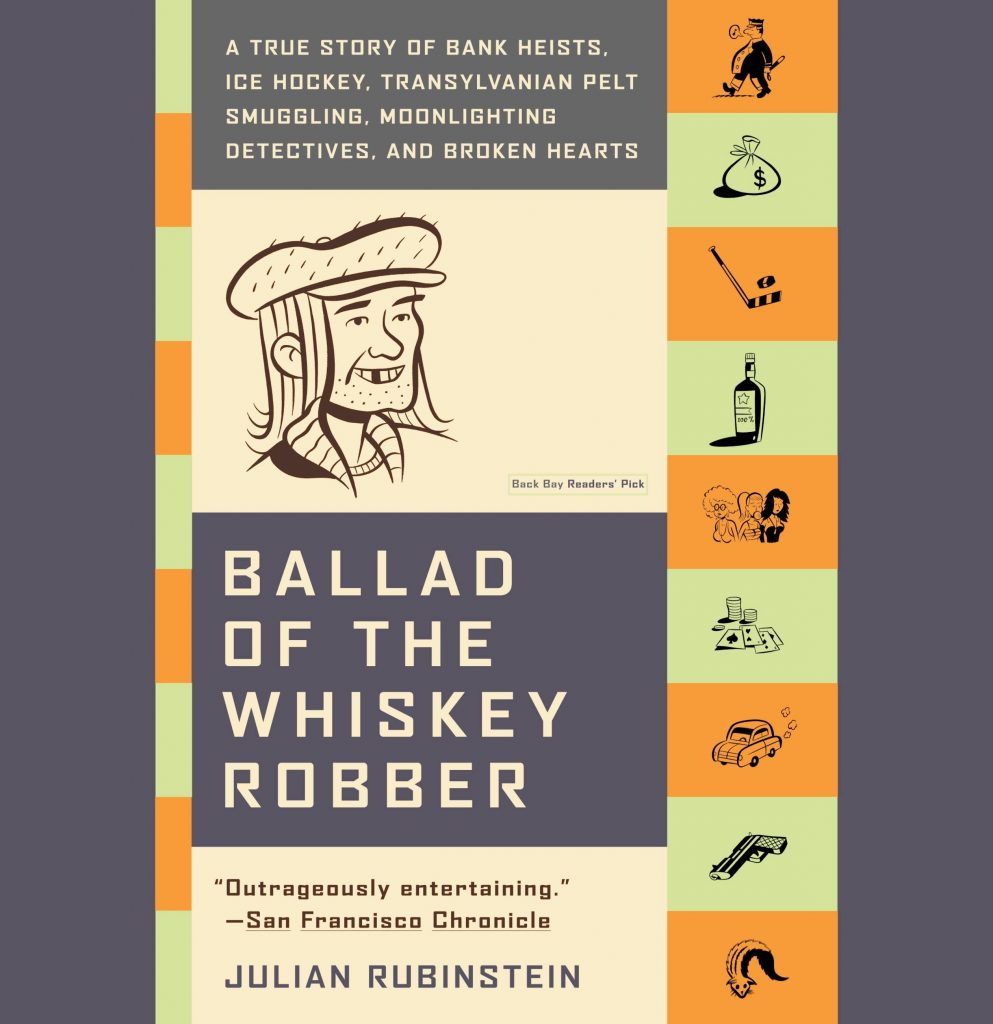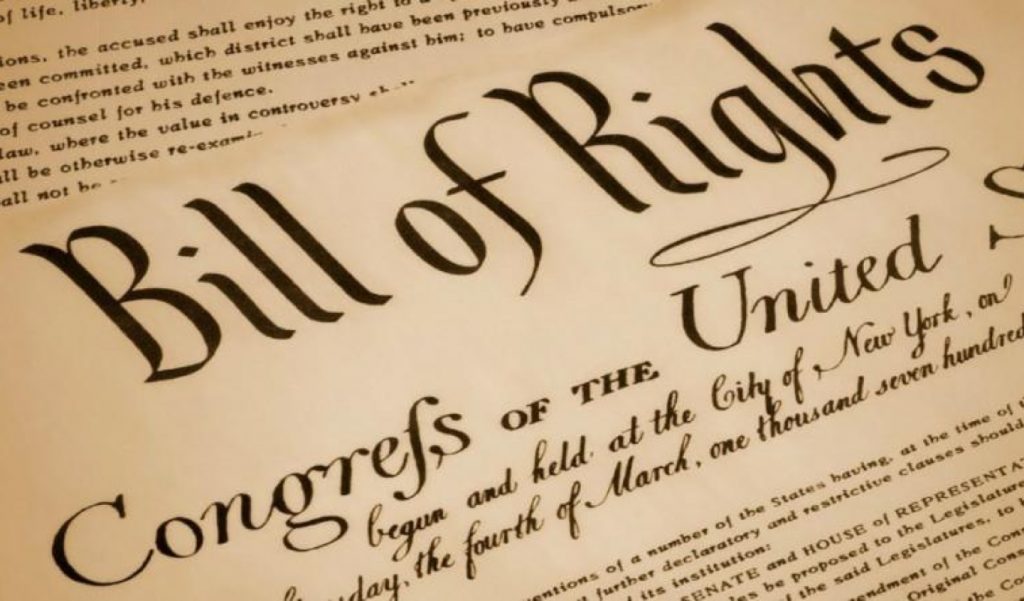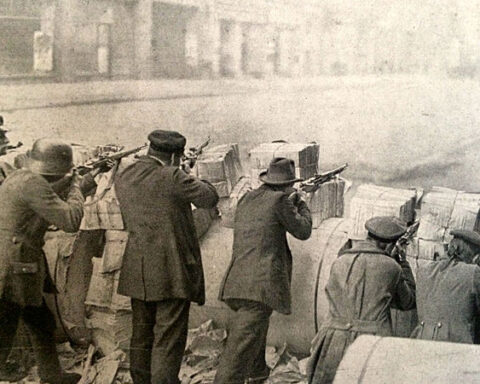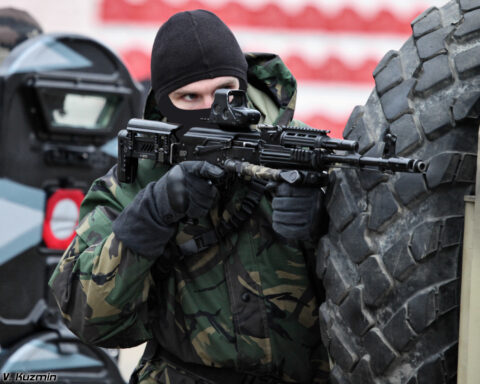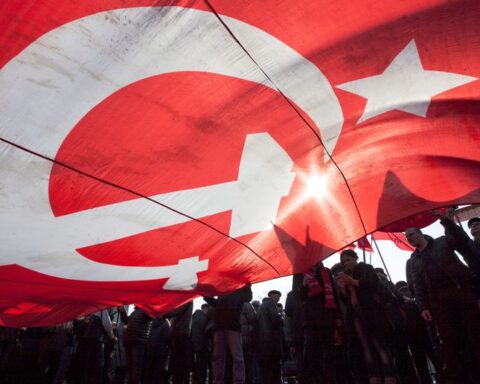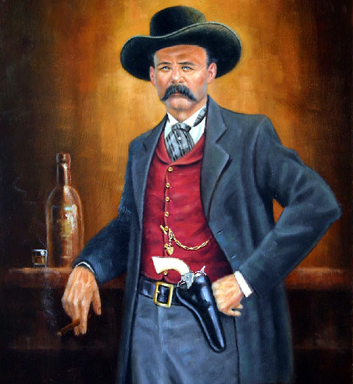Editor’s note: The following is extracted from Shots Fired in Anger: A Rifleman’s-Eye View of the Activities on the Island of Guadalcanal, by Lt. Col. John B. George (published 1947).
The Nambu Model 14 8mm Pistol
We noticed from the first on Guadalcanal that the Japanese Army seemed to possess a great fondness for good leatherware. The first troops which we contacted on Hill 27 wore very neat dispatch cases of well cared for cowhide; some of them had packs made of well tanned skin throughout, many of them had leather straps and fittings on their canvas packs and of course all of them had leather cartridge belts and pouches which were both neat and practical. But the most outstanding of all the leatherwork I saw were the excellent holsters in which officers and noncommissioned officers carried their handguns.
Many of these holsters were of nondescript patterns, made to fit the wide variety of handguns which (by God knows what diverse means) the Japanese had gotten hold of. All kinds and calibers of foreign handguns were carried by members of the Japanese forces on Guadalcanal, the most popular being the .32 Colt Automatic, the .30 and 9mm Luger, and the 7.65mm Browning. Others were there in smaller quantities — everything from Frontier model Colts to .25 caliber Walthers. And each of them had a special holster, carefully sewn and fitted with belt loops and a set of clip or am munition pouches. Found in made-up units, complete with holster, these guns all made pretty good souvenirs. The .32 Colt was an especially nice outfit in that respect, very neat to wear, and I can recall with a laugh how many of the men were swaggering around with belts slanted around their hips, making our little camp look even more like some Hollywood set, tropical boom town full of cowboys and “rough customers.”
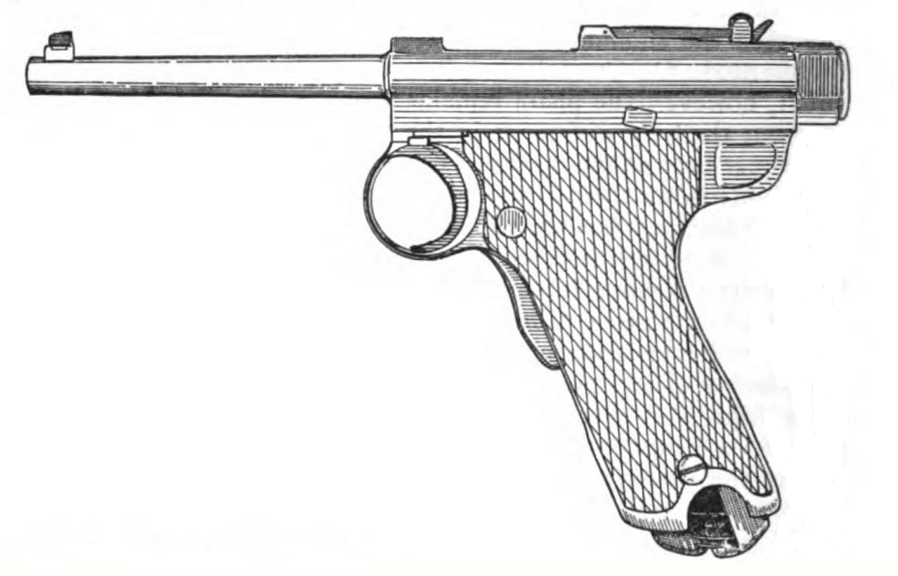
But the Japs were not solely armed with foreign handguns. They had their own weapons, too, and in greater numbers than any single foreign model. There were three different designs of Japanese pistols which I saw on that island — the M-1925, the M-1934, and the Nambu — all of 8mm caliber. Of these the Nambu was by far the best weapon and the most interesting from the standpoint of firearms design. It was always found inside one of those pretty, weathertight, leather holsters, provided with a belt loop and a shoulder strap — thereby becoming the nicest souvenir of all the handguns we knew of on Guadalcanal.
I got my first look at one early in January up on Mount Austen, at the battalion command post. It got back to the CP in the usual way. Sgt. Russel Hill picked it up under ordinary but interesting circumstances.
He was on the line one night after the moon had come up and things had begun to pop around a good deal. The usual number of hand grenades were being flung about, and the usual number of trigger happy Japanese and Americans were blazing away at one another with wild abandon. Hill was doing his damnedest to accomplish the impossible feat of getting his head low enough in his hole so that he wouldn’t stand much chance of being hit and yet remain able to look around in front, guarding against the likelihood of suddenly finding a live healthy Jap in the same hole with him. Relatively silent during the day, the Japs were now pulling their usual stunts and behaving like a bunch of hop happy idiots. They started things out by scoring three near misses on Hill’s position with grenades — two of which exploded in the heaped coral spoil on his right side, their fragments whizzing across his body, which was pancake-flattened in the muddy bottom of his hole when they went off. Hill yanked his Tommy gun bolt to the rear, threw the safety and discarded his ideas about sleeping that night.
He sat on, in the way many thousand doughboys have since, trying to filter out the confusing natural noises of the jungle night so that he could hear and distinguish the sounds made by men out in the cover, thirty yards away, who were at the moment trying to kill him. As his ears struggled trying to make something out of the confused mosaic pattern of bird and insect calls, wing whirs, falling leaves and twigs, his eyes also strained at the narrow bit of bare ground in front before the shadows farther down the slope. He knew that the Japs were playing it wise — keeping down below in the deep shadows, while they could look up and see every move of his helmet outlined against the moonlit sky.
Another Jap grenade plunked into the mud four feet from his hole, its fuse sputtering as it hit. He ducked and it exploded brightly — lighting his position up for the blindest enemy to see. “Thank God those grenades sputtered and sparkled! Man! Oh Man! Hell ain’t got nothin’ on this place!” Hill gritting his teeth, fought back a wild impulse to raise his Tommy gun and fire wildly into the shadows — to run cursing down the slope and close with those little yellow fiends who were driving him crazy, even to stop his cramped, baited breathing, and yell — yell at the top of his lungs. “Come and get me, you cowardly yellow bellies! Come and get me!”
But he did none of these things. He kept his eyes focused on the grassy places between the shadows where he stood some chance of seeing any human movement; sitting there with the rim of his helmet just above the dirt line, the compensator of his Tommy gun just nosing over the edge of his foxhole.
His friend out in front hadn’t thrown a grenade at him for a few minutes. The dangerous screen of jungle noises still jammed the jungle night. Were the damned little savages maneuvering into a better position out there? A cloud was dimming the moon light now, and they would be taking advantage of it. There weren’t many out there, maybe only two or three. But this one hole was the most prominent one of the whole line. They had spotted it during the day — maybe seen him get into it at five o’clock and now they were trying their damnedest to get a grenade inside. Hill tensed up even more and the muscles of his eyes pulled trying to see what was down there in the shadows….
He heard a scraping sound — very faint; the kind that any tree lizard could make with his belly — not especially different from a hundred such noises which he had heard in the past half hour during this nightmare he was living in — but it seemed to be connected with some kind of an unnatural change in one of the shadows. He looked carefully at the suspected spot, and detected nothing at first — not even a rapid lizard movement. Then he saw a round stone which seemed curious because it was smooth surfaced, not rough and mottled like the surface of coral. With his pulse turned into two trip hammers he kept looking carefully at that smooth round stone, with the merest amount of moonlight being reflected from it.
Then the stone moved. A little short raise upward, and then it settled back into place. Hill blinked his eyes and looked again, gripping his Tommy gun tighter. Once again the stone, which he could now make out as being only twenty-five feet from his fox hole, moved upward for about an inch and settled back down — only this time it rocked a little bit and the highlight of moon beams danced the least little bit on its surface. Again it repeated the process.
Hill slowly inched his Tommy gun over, ready so that he could take aim and fire in a fraction of a second. For the hundredth time he re-examined the stone and the shadows around it — and he noticed at last that the stone was wet — glistening in the moonlight.
But it hadn’t rained! And that moving up and down — that was breathing! And by God, that “stone” was a piece of equipment on some soldier’s back or side — a messkit or something moving up and down with the swelling of his lungs. Again Hill fought down a wild hysterical impulse to raise and fire his whole fifty- shot drum at that rounded surface.
But he waited — and the procedure paid dividends. A little increase in the moonlight, coming with the passing of the cloud, permitted him to make out the outline of a Japanese soldier, practically under his nose. The “stone” — the “messkit” — had become a shiny leather holster, riding above the Jap’s short ribs in the upper small of his back, as he lay quietly in place. The merest silhouette was all Hill could see, but the holster with moonlight on it, was a sure thing. He glanced down the white streak on his Tommy gun barrel and held a foot front of, and six inches below, the holster top; then he pressed the trigger and ran out twenty rounds, holding the gun down as best he could, while the successive flashes blotted the target and all around it from view.
Then he ducked low at once, to avoid the grenades he felt sure would come at him after he had exposed himself by firing such a long burst; but none came.
As he crouched there the jungle itself had become silent — his firing had quieted the birds and insects around him. But from twenty feet to his front was heard the unmistakable groaning, snore-like, horribly labored breathing of a man who had several big holes through his lungs each one obstructed with flowing blood — and who no longer has cause to remain quiet. And in a moment that sound died away.
No more grenades came over Hill’s way that night. He had killed his only stalker; and at 10 o’clock the next morning I was looking over a beautifully finished little pistol, in a handsomely made leather holster with a bloody but uncut shoulder strap on it. I recognized the gun as a Nambu.
It was a nice little souvenir, and for Hill it was certainly a well earned one.
This first look didn’t give me much of a picture of what the weapon was really like. While I was examining it three Jap 90mm mortar shells landed within the perimeter, not doing much more than to give a cheap purple heart to Lieutenant Conley, but they scared everyone a good bit. I did see that the weapon was a well finished little gun patterned roughly after the Luger in appearance, with the same slant to the grip and a similarly shaped trigger guard and magazine. It obviously was not at all like the Luger as far as functioning would be concerned, and it didn’t seem to be the good all around pistol that the Luger was known to be. But I was greatly interested, none the less, and like Hill, I would have put up with the weight of it rather than to have thrown it away.
Later on, at Cape Esperance I was able to conduct a more leisurely examination of the weapon, and I am now referring to some of the notes made then as I do this writing. In that malarial but otherwise pleasant spot I had ample opportunity to examine all kinds of Japanese weapons — piles of them.
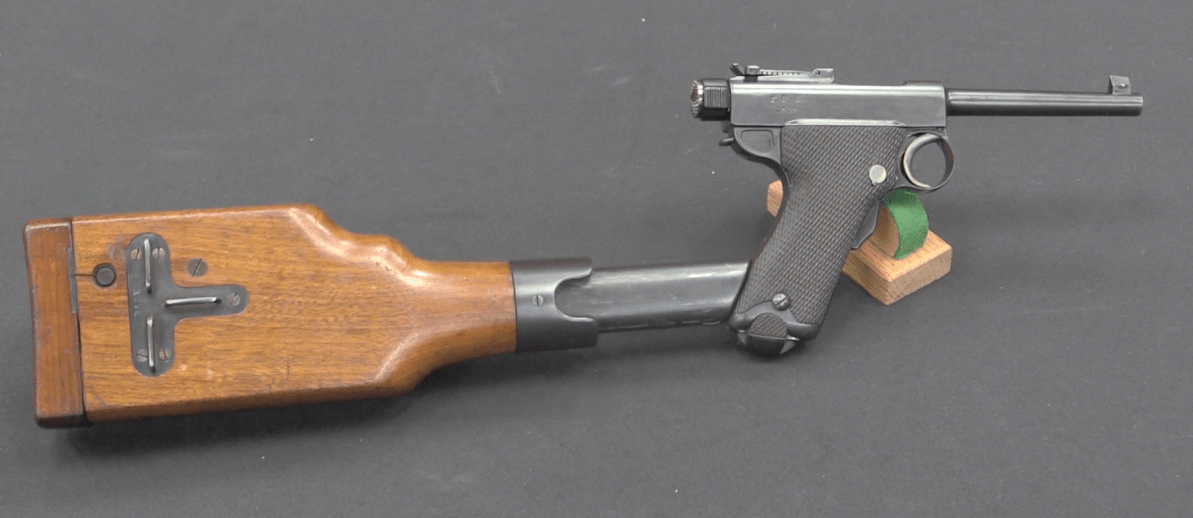
There were two types of Nambus which I saw on Guadalcanal, one with a groove in the butt to take a wooden shoulder-stock holster (a la Mauser and Luger), and one without any such adaptation which was used exclusively as a hand gun. I have never actually seen the shoulder-stock holster itself, only pictures of it in the manuals. On Guadalcanal, it was a pretty scarce item. With out it, however, the pistol remains a neat and well finished little weapon; the only difference in the two types being a cut in the lower rear butt of the model adapted for shoulder firing to engage a male fitting on the holster shoulder-stock. Both types of Nambu pistols — designed incidentally by the famous Lt. General Kijiro Nambu — were well finished guns, nice to handle and shoot.
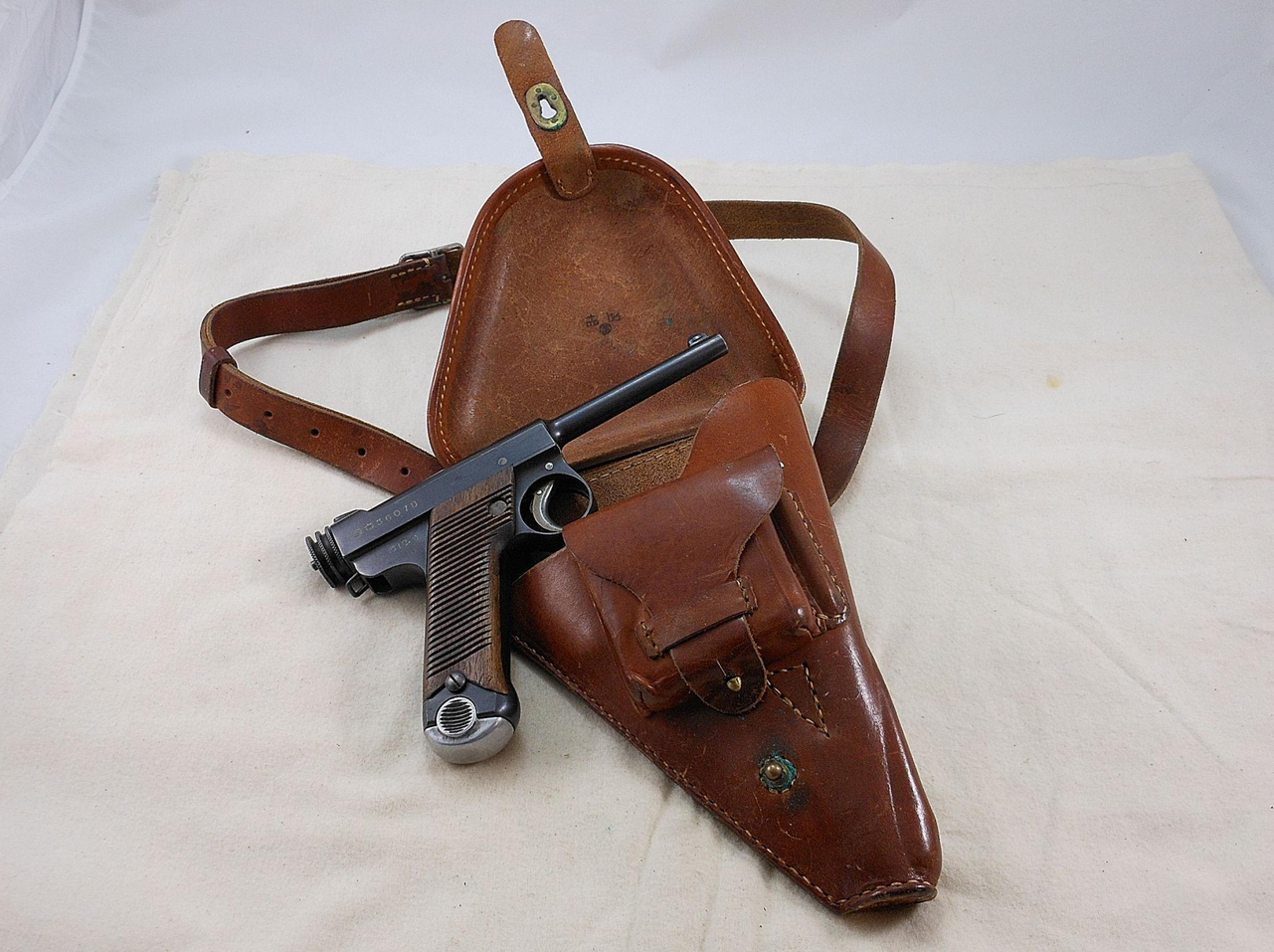
The little weapon is very presentable. Coming as it does in a neat leather holster, trimly designed, which contains all things necessary for maintenance and care, the outfit would sell fast on the counter of any gun store in the U.S.A. A cleaning rod, two extra clips, and extra loose cartridges can all be carried in the holster — a compact and handy little bit of kit. Next to the sword, it was the preferred weapon for wear by the ranking Japanese officers. In battle, for actual use, it was of course preferred to the sword (and so were all other Japanese made pistols). Several Jap officers I saw were killed with their swords sheathed, but a pistol — often a Nambu — in their hand. It’s not a bad looking gun.
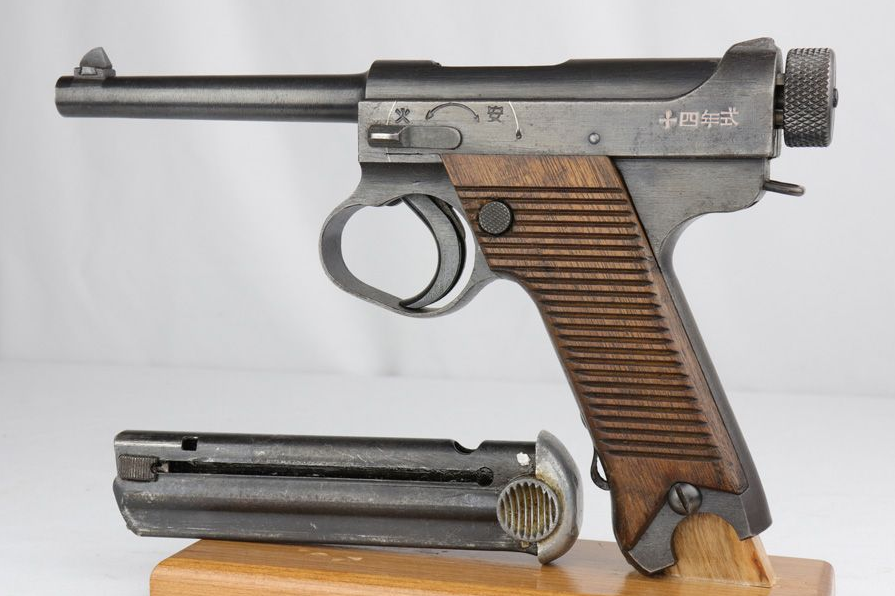
The Nambu is nine inches in overall length, and because of the Luger-like protrusion of the rearward receiver, the greatest overall length is measured straight from front to rear on the barrel and receiver assembly. The heel of the grip does not reach as far rearward as the very rear portion of the cocking piece, even in closed position. Vertically, the gun measures five and seven- eighths inches, the two extremes being the upper parts of the leaf rear sight and the aluminum butt of the magazine. With the magazine removed the measurement is five and one-quarter.
The barrel length, measured from the face of the bolt in closed position, is four and five-eighths inches, four and one-sixteenth of which protrudes from the receiver. The barrel is thin walled and tapered, lighter in weight than the Luger, and tapped in front with a permanent dovetailed base, into which a barleycorn front sight is driven.
The rear sight is of the variable slant leaf variety pivoting up ward from the front, with the height of the rear end controlled by the position of a movable leaf slide base which rests on a ramp sloping rearward. The more forward the slide, the higher the rear sight notch. This notch is cut into the very rear end of the slanting leaf. The top of the variable slant leaf is graduated in increments of fifty meters with the even hundred lines on the right side, numbered from one to five with a line below each number; and the odd ranges of 150, 250, 350, and 450 meters indicated by plain lines on the left side of the leaf without stamped numerals. A very simple arrangement, probably patterned after German ideas, in accordance with the sight graduations. Adjustment is obtained by positioning the sliding base.
The trigger guard was circular in appearance and, of course, a part of the receiver, looking much the same as that of the Luger. The trigger itself was broad and very sharply curved, leaving too little space forward of it within the guard to permit a gloved finger to safely rest — in fact, there was hardly room for a large Caucasian finger to enter it — even without glove.
Right below the trigger guard a grip safety had been inletted into the guard and forward strap, so that it could be squeezed inward by the second and third fingers. When so squeezed it pivoted from the top against the action of its spring and lowered a stud which was otherwise engaged at rest with the bottom of the trigger, locking same against rearward (firing) movement. There were strong reasons why this safety would not be foolproof; in the first place its only engagement was with the trigger — it did not act directly against the final firing mechanism; secondly, because of its forward position, it would nearly always be de pressed by the firer’s first casual grasp of the weapon, so that the first fumbling reach of finger inside the trigger guard would likely find the weapon ready to fire. The upper-rear position of grip safety, which is used in the case of the Colt (and for a few American Export Lugers), is much better, because it is not normally depressed except by the final hand grip which the firer employs when advertently aiming.
On the lower rear of the receiver, just below the cocking piece assembly, there is a lanyard loop which would be convenient for mounted troops to use.
By far the most unique point of appearance in the Nambu pistol is its peculiarly positioned recoil spring housing, which is located along the full length of the receiver’s left side. When viewed from the top it gives the pistol a lopsided appearance — creating an impression that the barrel emerges from the receiver in an off-center position.
The conventional magazine catch is used on the Nambu, with the push button release located immediately to the rear of the guard in approximately the same position as that of the Government 45.
Field disassembly of the Nambu, as with all good automatic pistols, is simple. The only tool required is a screwdriver or a substitute which will fit the grip screws. (These screw slots are too narrow to permit the use of a cartridge rim — an obvious fault of design.) To completely disassemble the weapon a single small drift and hammer would be needed, and the operation would require only a few more moments time. Only four pins and rivets would need to be removed from the magazine and trigger group.
The first step of disassembly is the removal of the Luger type magazine, which is made fairly long in order to hold eight of the special bottlenecked 8mm cartridges. This removal is commenced by depressing the magazine catch and withdrawing the magazine body from the grip.
Next the knurled rear protrusion of the cocking piece, which can properly be referred to as the firing pin spring base, is pressed inward with the thumb and turned gradually counter clockwise for ninety degrees. This will disengage its two holding lugs from their hold against a rear shoulder inside the cocking piece. Then the firing pin spring guide can be removed with the firing pin spring hanging onto its forward end. Next, the cocking piece itself is removed, by pulling it to the rear against the tension of the recoil spring and unscrewing it from the threaded rear end of the recoil spring guide. Then the recoil spring guide can be removed from the front (unless it has already “removed” itself by flying out when the recoil spring guide came free from the cocking piece).
Then the firing pin assembly (and spring too, if it did not come out with its guide) can be removed by squeezing the trigger and safety together and shaking the weapon with the muzzle elevated so the parts can fall out from the rear. The magazine catch is re moved by means of its left side (magazine catch lock) which is depressed and rotated 90 degrees counter clockwise and then re leased outward. This permits the catch proper to be easily jockeyed out with a finger tip.
The left grip is next taken off, by means of the exposed left grip screw. Then by pushing the barrel about one-eighth of an inch to the rear, the trigger and safety group become free to move down ward in the groove in the forward strap. If it is stuck with gummed oil — as often seems to be the case — some little pressure or a slight jarring of the butt against a wood surface might be required. On some Nambus the trigger group will merely fall down about three-quarters of an inch, remaining engaged in the grooves in the forward strap; in other models it can be removed completely by pulling outward on the safety and sliding it down further. With a drift and hammer, though, either model can be ordnance disassembled in a few minutes by removing the trigger and safety pins.
With the trigger and safety group in the low position or removed entirely, the barrel, barrel extension, bolt and bolt lock can be withdrawn to the front from the receiver and their components then disassembled from each other with ease. A pointed instrument (or a small finger) can afterward be inserted into the receiver to pull the bolt lock spring out of its position in the upper rear corner of the magazine housing.
The rather long and complicated sear and sear lever, which fits beneath the recoil spring housing, is removed by means of the knurl-headed sear pin which is turned by thumb pressure to unlock position and then withdrawn by the fingernails, thereby freeing the sear and sear lever along with the sear spring, sear lever extending plunger, and sear lever extending plunger spring, (all in one unit).
That would complete the field stripping; and, for all practical purposes this breakdown is fine enough. It would serve the purposes of field repair and parts replacement adequately. And, as previously stated, further complete ordnance disassembly would also be simple.
In operating the weapon, the general instructions for automatic pistols would hold. The magazine is loaded like the Luger, and a thumb piece is provided to permit the magazine follower to be depressed as the cartridges are inserted, which makes the task of clip loading much easier. The magazine is inserted — pressed into final position — the same way as that of the Colt 45. The first round is loaded by drawing the cocking piece to rearmost position and releasing it, whereupon the bolt goes forward, ramping the first cartridge into the chamber. The weapon then stands cocked and ready to fire.
When the safety is squeezed it frees the trigger. Firing pressure on the trigger transmits itself to free the firing pin from rearward hold through the following force-train: it (the trigger) pivots on the trigger pin, causing an integral extension to press upward against the forward end of the sear lever assembly; this causes the rear end of the sear lever to move downward as the entire lever pivots on the sear pin, thereby disengaging the rear sear projection from its small and rather precarious engagement with the tiny firing pin shoulder, located on the extreme rear of the firing pin body. This frees the firing pin and it goes forward by action of the not overly-strong firing pin spring. Semi-automatic fire is assured by the sear lever extension plunger, located forward on the sear lever (as part of its actual length), which permits the sear lever to be compressed to shorter overall length during recoil, thereby disengaging the forward contact with the trigger and avoiding full automatic operation. This contact is re-assumed automatically when the trigger is released.
This entire ignition system is rather haywire of design, having many of the faults of the Luger, with a few more of its own thrown in for good measure. Springs are not strong enough, sear engagement surface is not great enough and the whole works makes for a springy and cushioned trigger let-off, which nearly all American shooters would despise.
In operation, the weapon does not compare with the Colt 45 in functioning reliability, or, as far as I am concerned in accuracy. (Which latter comparison constitutes a crowning insult.) It is more sensitive to grit and dirt, and its maintenance is more of a problem than that of our own handgun.
Its chief advantages are not military ones at all. They are neat in appearance, nice “feel,” good finish and fit, all of which make it an attractive and desirable souvenir. The leather holster furnished with it also adds much to its eye-appeal.
(Just think of what might have happened to Sgt. Russel Hill if it hadn’t been for that “eye appeal”!)
As a souvenir or a collection piece it’s nice to have. Even its little bottlenecked cartridges — with the crimp secured by three little punch marks — look very pretty. For military use, though, I wouldn’t give it hell room either.
(Continue to Part 7)

